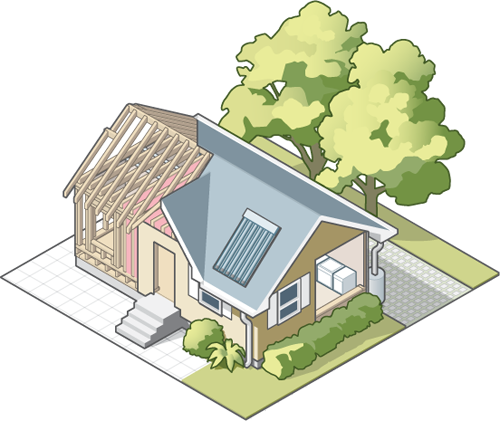
Green Living
Keep the house free from dust buildup and install entryway systems
Dust contains dust mites (tiny insects that feed on human skin flakes and detritus), pollen, and other contaminants, which are major causes of allergic reactions and asthma attacks. Use micro fiber mops and cloths that reduce the need for cleaning chemicals and HEPA-filtered vacuum cleaners to reduce air-borne particulates. Use the best quality air conditioning filter you can afford - pleated-media or HEPA filters are 4 to 20 times more effective than standard panel filters in removing dust particles from the air. If someone in your household suffers from asthma or severe allergies, consider eliminating wall-to- wall carpets.
Leave the outside, outside. The soils around the home can be contaminated with hazardous chemicals from automobile exhaust, pesticides, various other chemicals, or dust from lead paint. Utilize entryway systems (grills, gates, mats, etc.) to reduce the amount of dirt, dust, pollen and other particles entering the building at all entryways. By simply removing shoes at the doorway or using a doormat, indoor contaminants can be significantly reduced. Try also to avoid plants, trees and bushes in building entrance areas that are varieties that yield berries, flowers and leaves that are likely to be tracked into the building.
Reduce, Repair, Reuse
Recycling, including composting, diverts millions of tons of material from landfills and incinerators every year according to the EPA. The benefits of recycling include conservation of resources, prevention of greenhouse emissions and other pollutants, saving energy, creating jobs, stimulating development of greener technologies, reducing need for landfills, etc. Although there is no doubt that recycling is beneficial to our environment, it should be practiced after you’ve reduced and reused.
Finally, buy local products to support the local economy and reduce transportation impacts, buy products with less packaging, buy in bulk to save money and embodied energy, and just buy less.
Not everyone will be able to make all these changes - however, every change you make will have a big impact! This way of living is better and safer for you. It is also much better for the environment! Switching to non-toxic living can be a very pleasant and rewarding experience if we view it as a return to the way our ancestors lived.
More topics:


About This Project
This project was researched, designed and coded by Phil Loubere and Jordan Kennedy in Middle Tennessee State University’s School of Journalism, Visual Communication concentration.